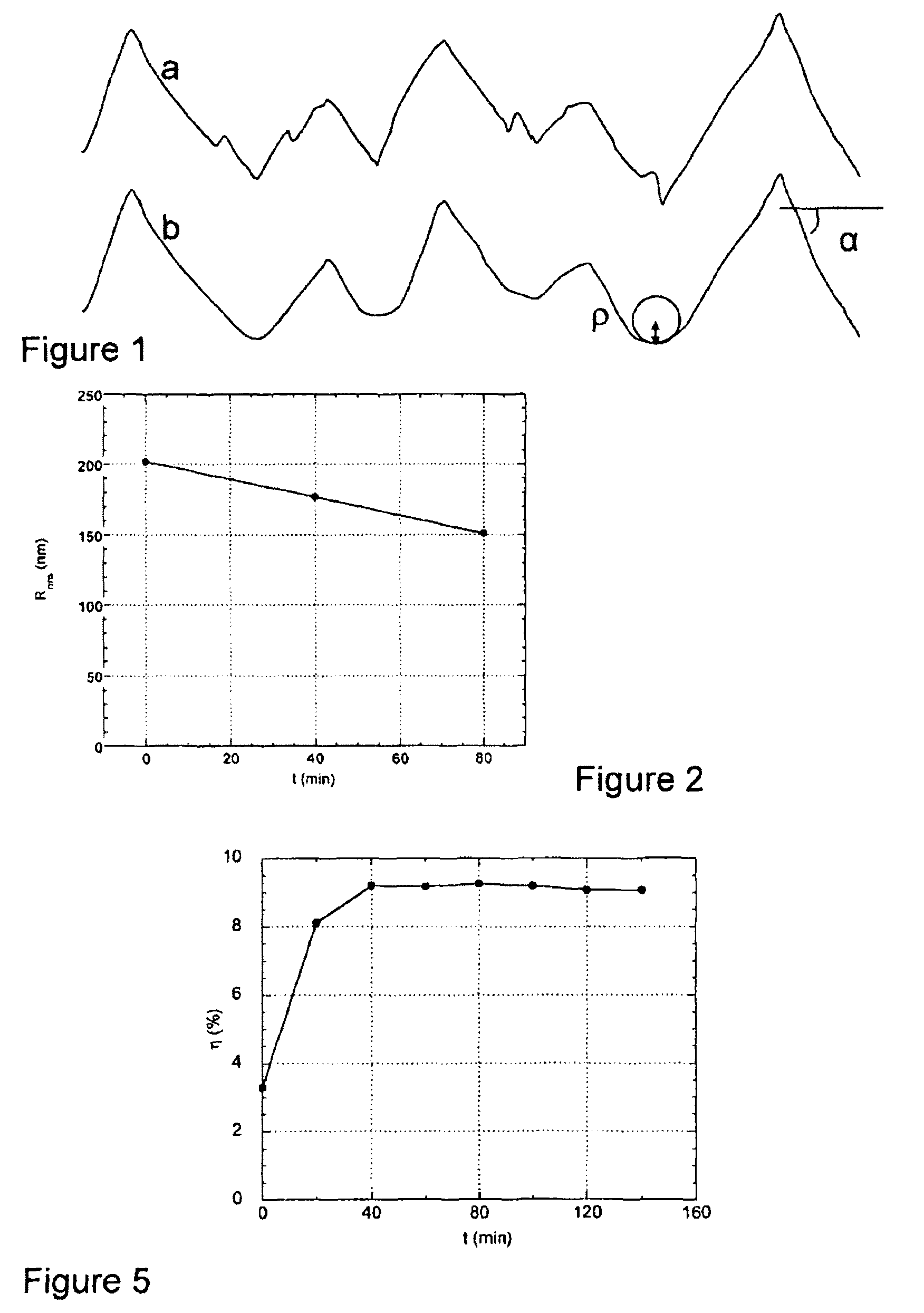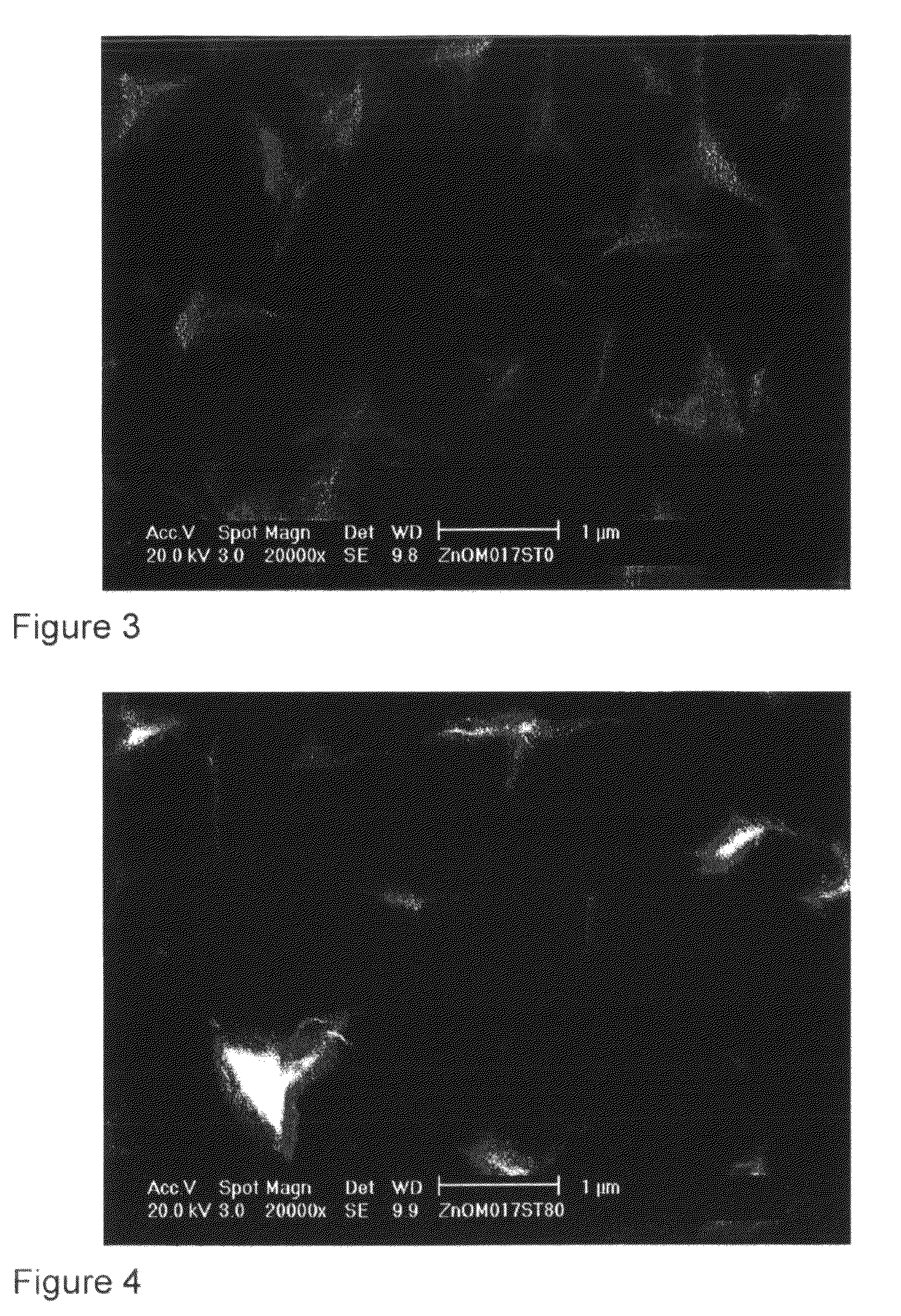Textured transparent conductive layer and method of producing it
a transparent, conductive layer technology, applied in the direction of photovoltaic energy generation, energy conversion devices, electrical apparatus, etc., can solve the problems of reduced effectiveness, weak light absorption quantity, and type of method, and achieve satisfactory later growth of the photoelectric layer and good light absorption capacity
- Summary
- Abstract
- Description
- Claims
- Application Information
AI Technical Summary
Benefits of technology
Problems solved by technology
Method used
Image
Examples
Embodiment Construction
[0027]Before providing a description of the TCO layer according to the invention and its production method, we will recall that a photoelectric device, whether it involves a solar cell or a photodetector, is characterized by its conservation performance η and its optical trapping capacity, the first depending on the second, as long as the collection of photogenerated current is good.
[0028]The conservation performance η of a device of this type is given by the ratio between the electric power supplied by the device and the candle power received, the power supplied being equal to the product:
Short-circuit current(Isc)×Open circuit voltage(Voc)×Fill factor(FF).
[0029]A good indication of the optical trapping capacity is given by the photocurrent density (Iinv) provided by the cell under reverse voltage, this reverse voltage making it possible to extract all photo-generated carrier current and thereby to evaluate the maximum current density of the device, independently of the values of V...
PUM
 Login to View More
Login to View More Abstract
Description
Claims
Application Information
 Login to View More
Login to View More - R&D
- Intellectual Property
- Life Sciences
- Materials
- Tech Scout
- Unparalleled Data Quality
- Higher Quality Content
- 60% Fewer Hallucinations
Browse by: Latest US Patents, China's latest patents, Technical Efficacy Thesaurus, Application Domain, Technology Topic, Popular Technical Reports.
© 2025 PatSnap. All rights reserved.Legal|Privacy policy|Modern Slavery Act Transparency Statement|Sitemap|About US| Contact US: help@patsnap.com



